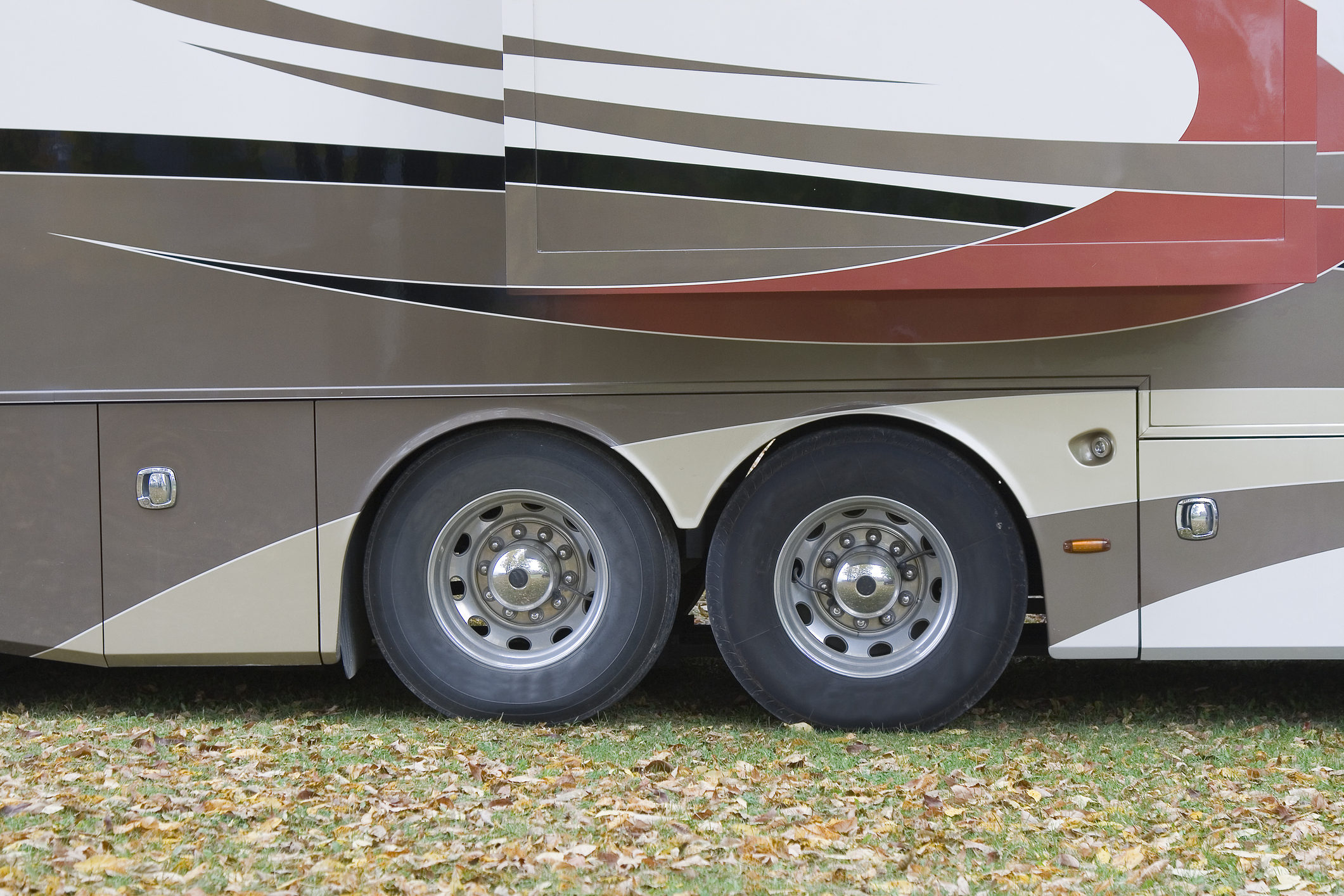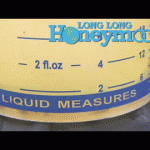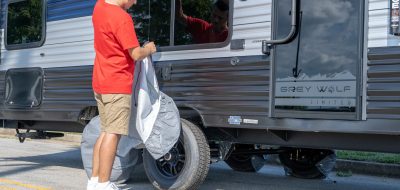The danger of a RV tire blowout increases as the summer temperatures rise.
The damage as a result of a tire blowout can be extensive, as the rubber and steel belting from the tires separate and cause spinning and flying shrapnel damage to the RV and in some cases the vehicles around them.
Always check the pressure and condition of your tires before taking your RV on the road.
If proper safety measures are taken, most tire blowout damage can be avoided.
Air Temperature is as Important as Air Pressure
If you’ve driven more than about a mile, friction with the road, flexing of the tire casing, and flexing of the tread begins to heat up the air inside the tire.
A very general rule of thumb is that a properly inflated/loaded tire, when up to operating temperature—one hour or more of operation—will typically run about 50 degrees hotter than the ambient temperature, according to valortpms.com.
Inflation pressure controls the shape of the tire casing. Proper inflation pressure is critical to maintaining proper shape of the tire and proper stress distribution in the tire. This in turn reduces flexing and heat build-up.
Temperature increase may generate three different processes in the tire: air expansion, loss of structural mechanical resistance, and chemical degradation, explains valortpms.com.
Air Expansion: When the temperature inside the tire increases, the pressure inside the tire also increases roughly 2 psi for every 10°F for RV and truck tires and 1 psi for every 10°F for passenger car tires.
Loss of Structural Mechanical Resistance: Between 95and 125 degrees Celsius microstructural changes within vulcanized rubber may create substantial stress relaxation, material softening, permanent set, and creep, which affect the rubber’s mechanical behavior.
Thermo-chemical Degradation: This includes pyrolysis, thermo-oxidation, and combustion; all three reactions produce flammable gases. Tire degradation of the rubber takes place during pyrolysis and thermo-oxidation causing the tire to age prematurely.
Air Pressure Impacts Temperature
A tire’s footprint is changed by both overinflation and underinflation.
A change in footprint affects tire traction and leads to irregular wear.
The lower the air pressure the more a tire will deform or flex, increasing the tire temperature.
Since under-inflated tires flex more, tire temperature increases.
Studies have shown that for every 2 psi in underinflation, the internal tire temperature rises 5°F. If a tire that should run at 100 psi, operates at 70 psi, the temperature of that tire could rise to 275°F, reports fleet-air.com. This excessive heat will deteriorate tires.
If tires are under-inflated, the steel cords they are made of will fatigue and break, which attributes to most tire debris found along the highway.
Safe-driving tips
ADOT and the Arizona Department of Public Safety urge holiday travelers to follow these summertime safe-driving tips:
Make sure to check your vehicle—including the condition of your tires. Proper tire pressure can help prevent a blowout and improves gas mileage.
Check oil and other fluid levels and inspect belts and hoses for wear.
Get plenty of rest before traveling and take regular rest breaks. Fatigue is a serious safety risk.
Buckle up and obey speed limits.
Never drive while impaired by alcohol or drugs. Arrange for a designated driver in advance.
Cell phones or GPS devices help in an emergency. Make sure they are fully charged.
Be prepared in case your vehicle breaks down. If you need to change a flat tire, pull completely off the roadway. However, avoid stopping in areas with taller grass or brush because hot vehicle components can spark a fire.
Expect the unexpected, including unscheduled closures or restrictions due to crashes or other incidents.
Pack extra drinking water and snacks. Be prepared for changing weather conditions. Summer storms can produce blowing dust.
Worth Pondering…
Speed was high
Weather was hot
Tires were thin
X marks the spot
BURMA SHAVE
If you enjoy these articles and want to read more on RV travels and lifestyle, visit my website: Vogel Talks RVing.








Anonymous
Blowouts often occur because tires are underinflated. Overloading the truck or trailer as well as not attending to a small puncture or other leak will cause a loss of tire pressure. Some times it may cause for extensive damage If the tires run underinflated for some distance, they can become so hot they disintegrate. Thus if you realize like your tires blown then stop there itself and find any truck repairing service http://www.truckersassist.com/ and make sure all your tires are in good.